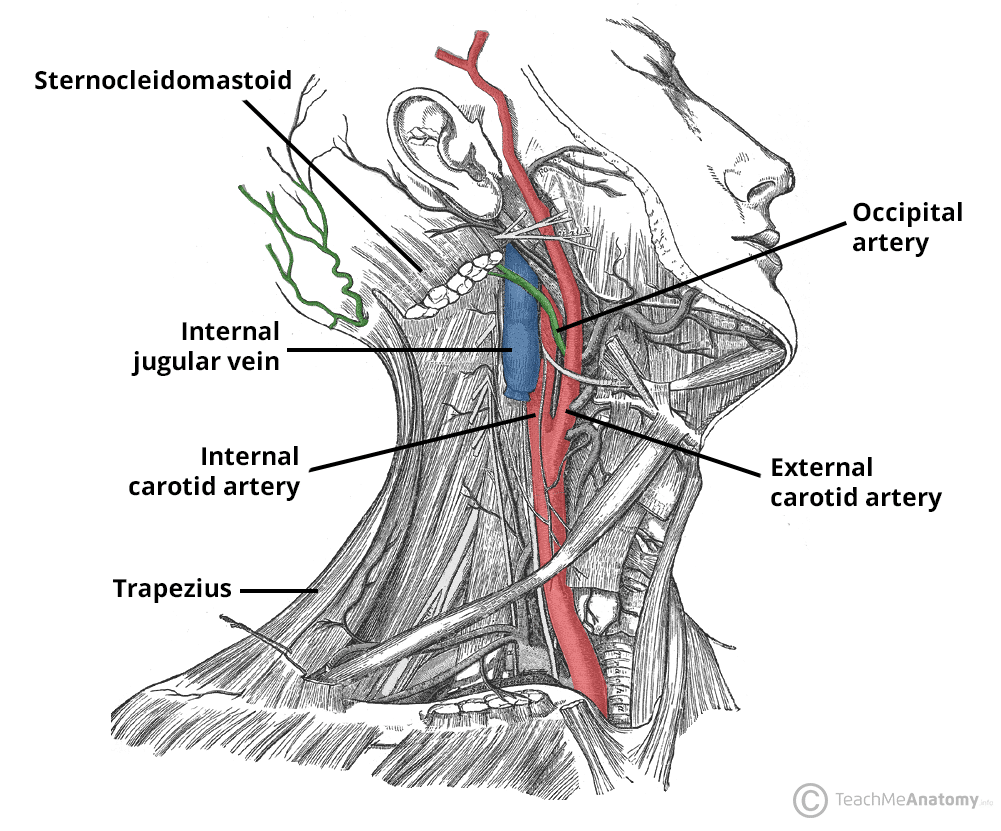The occipital artery is an artery of the head and neck region. It is the fifth main branch of the external carotid artery.
It contributes to the blood supply of structures in the posterior neck and scalp.
Premium Feature
3D Model
Course
The occipital artery arises from the external carotid artery approximately 2cm distal to the carotid bifurcation.
It travels in a superoposterior direction, deep (and parallel) to the posterior belly of the digastric muscle. The occipital artery crosses the internal carotid artery, internal jugular vein, vagus nerve and accessory nerve to reach the skull.
At the skull base, the occipital artery passes through the occipital groove – a shallow groove located medial to the mastoid process of the temporal bone.
It then moves superficially, piercing the deep cervical fascia between the sternocleidomastoid muscles and trapezius muscles. It is accompanied by the greater occipital nerve.
The occipital artery emerges onto the posterior scalp and terminates by dividing into numerous branches.

Fig 1
The occipital artery arises from the external carotid artery in the neck.
Supply
The occipital artery supplies several structures in the neck and posterior head:
- Sternocleidomastoid artery – supplies the sternocleidomastoid muscle.
- Descending branch – supplies the posterior neck and deep back muscles.
- Auricular branch – supplies the posterior aspect of the ear.
- Occipital branch – supplies the posterior scalp and occipitalis muscle.
- Mastoid and meningeal branches – supply the dura mater.
Variants
In approximately 15% of the population, the posterior auricular and occipital arteries originate together from the external carotid artery as the occipitoauricular trunk.